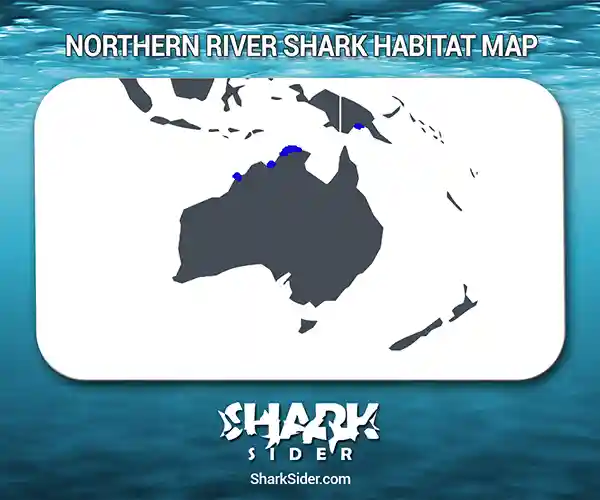Northern river sharks are a rare species belonging to the family Carcharhinidae.
The species is named after New Zealand ichthyologist Jack Garrick, who discovered two specimens of this shark in Papua New Guinea which is why they are also known as the New Guinea river shark. It was not until 2008 that this species acquired a formal recognition upon being described formally
Northern River Shark Scientific Classification |
|
| Kingdom | Animalia |
| Phylum | Chordata |
| Class | Chondrichthyes |
| Order | Carcharhiniformes |
| Family | Carcharhinidae |
| Genus | Glyphis |
| Scientific Name | Glyphis garricki |
Description
These medium-sized requiem sharks can measure up to 8.2 feet long. The transition from the steel-gray dorsal surface color to the white ventral underside is sharp, except near the sides of the trunk, where it becomes jagged. The trailing margins and fin-tips of the anal and caudal fins are dusky or black.
The northern river shark has a well-built, robust body with a high back. They have a flat, broad head complete with small eyes covered with nictitating membranes and ending in a rounded snout. Their nostrils have triangular skin flaps outside the openings. They have a sizeable arched mouth consisting of short furrows at the corner, with 31-34 tooth rows in the upper and 30-35 tooth rows in the lower jaw. In contrast to the triangular, upright teeth in their upper jaw, the lower teeth are a bit straight and narrow or a little curved.
While the triangular pelvic fins have straight trailing margins, the large pectoral fins consist of pointed tips and margins that tend to curve a little to the back. The apex of the long-based, first dorsal fin is straight. In contrast, the second dorsal fin is two-thirds as long as the first. The margin at the back of the anal fin smaller in size than the second dorsal fin has a strong notch. The caudal fin is made of long upper and lower lobes, with the upper being narrow and consisting of a ventral notch at the tip.
These sharks have small, overlapping, and oval-shaped dermal denticles, made up off three horizontal ridges.
Where do they live
Map Of The Northern River Shark’s Habitat

The northern river shark is found scattered across coastal bays, estuaries, and tidal river waters of Western Australia, Papua New Guinea, and the Northern Territory. In Western Australia, they mainly inhabit the Ord River region, King Sound gulf area, and Doctor’s Creek. In the Northern Territory, the northern river shark populations exist in the Alligator River and Adelaide River. A few have also dwelled in Papua New Guinea’s Fly River.
They live in muddy waters with high turbidity. The adults mostly remain in a marine environment. On the other hand, the juveniles have a diverse habitat, thriving in freshwater areas alongside brackish and saltwater dwellings, with salinity levels varying between 2 and 36 ppt.
Behavior
Dietary
These sharks are piscivorous, i.e., they feed primarily on fish found in rivers and coastal areas.
Reproductory
Bignose sharks are viviparous (females give birth to live young) as the embryos get nourishment and exchange gases via a placental sac after exhausting the yolk supply. Females give birth every two years around October, before the onset of the rainy seasonl. Every litter has an average of nine pups, each measuring 26 inches long. Males attain sexual maturity when they reach lengths of 3.9 and 4.6 ft, whereas females acquire the same when they are 4.6 – 5.6 ft long.
Adaptations
In the skin around the area of their head and undersides these sharks have hundreds of tiny pores of ampullae of Lorenzini (electroreceptors). These help them to detect electric fields, which help them navigate or locate prey in poor visibility.
Interactions with humans
There are reports of no more than 250 mature northern river sharks in the wild. Commercial fisheries, longlines, and gillnet catch these sharks, threatening their numbers. Additional threats such as habitat degradation, low abundance, and other human threats have made the IUCN assess these sharks as Vulnerable.
